Docket 10-4: Why Can't FCC Finish Routine Spectrum Issues?
We have written before of the saga of Docket 10-4 and the fundamental questions it raises about the ability of FCC to do the “bread and butter” of spectrum management while it is pressed by major industry groups to work on megaissues. It is ironic that in this case it is one of the the major industry groups, CTIA, that brought this issue to FCC but apparently has now decided to focus on the major issue of spectrum reallocation. But if a major industry can not get action on this type of “bread and butter” issue in anything resembling timely resolution, imagine a startup that needs FCC action to get its business plan going. Indeed imagine the difficulty such a startup might have getting VC funding in the future if the VC community perceives FCC as being consistently dilatory.
As a reminder of the issue here, CTIA submitted the document shown above to FCC on May 1, 2006 that dealt with interference caused to cellular systems by first generation “boosters”/“bidirectional amplifiers”, often used in rural areas where cellular coverage is marginal or inadequate. CTIA sought to have such units declared illegal even though FCC had been granting them equipment authorization under questionable legal authority for several years at that point. In the document shown above was this clear statement:
![]()
The clock at the top of this post shows how many days have passed since CTIA said this was “urgent, 2405 days as this is being written. (I will stop the clock when FCC resolves this matter.)
In my previous post on this topic I proposed a method for resolving this issue using a variant of negotiateg rulemaking that will try to avoid previous failures FCC has had with this approach and which can be done within existing laws and regulations. An ex parte filing was made to insure this was in the record of the proceeding. Apparently no one has paid any attention to my suggestions as all involved argue of the detailed merits of their favorite solution and there is little sign of closure on this issue. Also all sides are continuing to be hurt by the present ambiguity: The cellular carriers continue to get interference from first generation units that can still be sold legally by irresponsible vendors and they will continue to get interference for years into the future since this equipment probably lasts for about 5 years and there is no realistic way FCC can stop the use of equipment already sold. The responsible vendors are being hurt because they are underpriced by the irresponsible vendors and because the ambiguity of their product denies them access to capital markets. As said before, a true lose/lose situation!
So FCC and participants in Docket 10-4, how long will you continue to “knock your heads against the wall” to get this resolved using the present FCC deliberative process? Am I the only one who sees that something is basically wrong here with the FCC process for handling such issues?
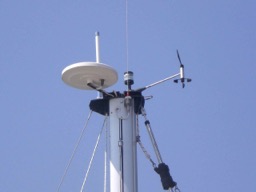
VZW Claimed Coverage on Chesapeake Bay
So cellular industry, if you really think this use is illegal try to FCC to take enforcement action against me. (Note that at present FCC deals with even cellular and GPS jammer sales with NAL actions that probably rarely result in any payments of penalties.)
Spectrum Crisis: Fact Or Exaggeration?

My friends at RF Globalnet had an interesting article written by their editor,Paul Kruczkowski, on November 12th with the above title. Here is the introduction:
It appears that the wireless spectrum crisis may have recently become the mobile broadband spectrum debate. Since 2010 — when the FCC declared that there would be a spectrum deficit of 275 MHz as soon as 2014, and subsequently released its National Broadband Plan to make 300 MHz of spectrum available by 2015 and 500 MHz available by the end of 2020 — it has been widely accepted that we are facing an impending spectrum crisis. The CTIA – The Wireless Association has long supported this position and recently reinforced it with data in its Semi-Annual Wireless Industry Survey showing significant growth in wireless subscriber connections and wireless network data traffic over the past year. Others, however, are questioning the validity of the crisis claims and the projections of runaway wireless network data traffic that have been used to support this argument since 2010.
The interesting thing about the critics of the presumed crisis is that they agree with the FCC and CTIA that the wireless broadband industry would benefit from more available spectrum. On the other hand, they definitely disagree with CTIA’s projected 100%+ annual growth of network data traffic and the FCC’s doomsday position of a massive spectrum deficit by 2014. Tim Farrar, president of consulting and research firm Telecom, Media and Finance Associates, Inc., recently wrote an article on GigaOM called “The Myth of the Wireless Spectrum Crisis”, in which he questioned the FCC’s and CTIA’s narrative of an impending spectrum crisis and used the CTIA’s own data to show that network data traffic growth slowed substantially in the first six months of 2012.
For bureaucratic reasons I can not reprint the whole article, but urge readers to surf over to it. The comments are also interesting. While much cynicism about the cellular industry’s spectrum goals comes from broadcasting circles, RF Globalnet is a techie publication with readers generally unrelated to broadcasting issues.
FCBA Chairman's Dinner & FCC: Legal but is it Really Ethical?


Your blogger is a minor functionary in this organization as a co-chair of a committee that organizes professional events dealing with technical communications policy - generally spectrum oriented.“ a volunteer organization of attorneys, engineers, consultants, economists, government officials and law students involved in the study, development, interpretation and practice of communications and information technology law and policy. From broadband deployment to broadcast content, from emerging wireless technologies to emergency communications, from spectrum allocations to satellite broadcasting, the FCBA has something to offer nearly everyone involved in the communications industry. That’s why the FCBA, more than two thousand members strong, has been the leading organization for communications lawyers and other professionals since 1936.”
The text in this screen shot is somewhat small, so here is the text in a more readable format:
The 26th Annual Chairman’s Dinner will be held Thursday, December 13, 2012 at the Washington Hilton, 1919 Connecticut Avenue, NW. The evening will begin with a reception at 6:00 p.m. The dinner will begin at 7:30 p.m. in the International Ballroom and will be followed by remarks from FCC Chairman Julius Genachowski. Sponsor’s tables include a $350.00 tax deductible donation to the FCBA Foundation. Inviting Government Guests - Pursuant to the Office of Government Ethics regulation on widely-attended gatherings (5 C.F.R. 2635.204(g)(2)), the Chairman’s Dinner appears to qualify as a widely attended gathering. The value of an individual ticket to the dinner is $225.00. Most employees of the Federal Communications Commission and the Commerce Department may be directly invited to attend the dinner as guests of individuals and organizations purchasing tables or tickets. In most cases, individuals and organizations may issue invitations to the Chairman’s Dinner without the involvement of the FCBA. Some agencies, departments and branches of the Federal Government, however, apply additional stipulations above the regulations issued by the Office of Government Ethics. Individuals who have signed the Administration’s Ethics pledge cannot accept invitations from most registered lobbying organizations or registered lobbyists. While this event has qualified as a widely-attended-gathering in previous years, each FCC employee is required to obtain individual ethics clearance based on matters they are working on within the Commission. Employees of the Commerce Department are required to obtain individual ethics clearance through the Department’s Office of General Counsel. Invitations to Members of Congress, Congressional Staff, and employees of the Department of State must be issued by the FCBA. Contact the FCBA for additional information.
Note the phrase “Most employees of the Federal Communications Commission and the Commerce Department may be directly invited to attend the dinner as guests of individuals and organizations purchasing tables or tickets.” Thus FCBA members active in telecom policy can invite FCC and NTIA employees to a $225/head dinner where they will only be surrounded by other people who paid $225/head. Furthermore, if you buy a table, your favorite FCC and NTIA employee will only be surrounded by your invitees, no doubt only people from your FCC regulated or your law firm.
This is clearly legal under present law and as the announcement says FCC and NTIA employees need approval from agency ethics staff. Note that “Members of Congress, Congressional Staff, and employees of the Department of State” are presently subject to somewhat tighter ethics rules and can not get invitations directly from FCC regulates or their law firms so presumably might sit with a broader cross section of people.
But as a matter of public policy does this make sense? Why aren’t FCC and NTIA employees at least to the same ethics standards as DOS? While holiday socializing is a good thing, are $225/head dinners described here as “widely attended gathering” really the only way to do it? (Does a $225/head dinner qualify as a “widely attended gathering” in any other context?)
No doubt we will have new leadership at FCC and NTIA in the next few months. Tightening ethics rules for this type of events - at least to DOS standards - seems like a good idea for the new leadership at each agency as an early project to improve ethics and credibility.
CTIA & PCIA: With SCOTUS Review of FCC "Shot Clock" Decision Pending Shouldn't You Have a "Plan B"
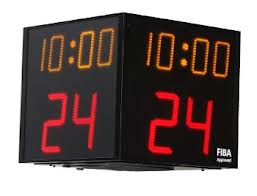
Thanks to the Federal Communications Commission’s (FCC) 2009 shot clock ruling on tower siting, the number of cell sites continues to grow, which are key to providing wireless service in a geographic area. According to the semi-annual survey, there were 28,641 cell sites added this year for a total of 285,561 nationwide.
PCIA’s website and AT&T’s and Verizon’s policy blogs are also silent on the topic. Perhaps everyone is confident that the Supreme Court will uphold the FCC’s implementation of the shot clock rule - but then why did SCOTUS accept the case if it was so obvious?
Buildout of cellular infrastructure is the dominant source of wireless capacity growth despite the constant demands for new spectrum by the major carriers. This wireless capacity growth has numbers benefits for economic growth and international competitiveness. As Preston Marshall said recently at the recent Silicon Flatirons spectrum conference, if you increase mobile spectrum by 50% you basically increase mobile capacity by 50%, not 2000%. Thus timely buildout of infrastructure is key.
Why Does Infrastructure Have to Look Like it was “Designed by Engineers”?
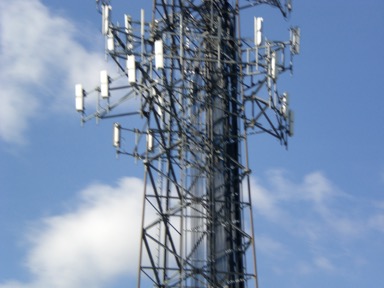
Tip O’Neill famously said “all politics is local”. The cellular establishment no doubt feels that if they lose this case in the Supreme Court they can just pressure Congress to give them a more favorable law that avoids the problems of the present shot clock rule. Perhaps. But if Tip O’Neill is still correct, members of Congress may well be reluctant to pressure constituents to accept undesired cellular infrastructure in their immediate neighborhoods.
But perhaps the cellular establishment should listen to industry insiders like Previously I reported about the comments of Bechtel VP Jake MacLeod, when he stated at a 2009 FCC broadband hearing that “we have reached the end of the line for current design concepts (for cellular towers).” (Bechtel is a major builder of wireless infrastructure.) Or Alcatel-Lucent Wireless Division President Dr. Wim Sweldens who said
But we also have to be honest that in the mobile industry we are creating some problems. The mobile industry is actually contributing a fair amount to pollution...The mobile industry is also obstructing and cluttering our landscapes and cityscapes with more and more and bigger and bigger and uglier and uglier antennas and towers.
A major part of the opposition to infrastructure in suburbia is the inappropriate design that is normally used. If new design techniques could create the stealth bomber that could fly and be invisible to most radars, it is likely that a bold new design approach could develop new infrastructure designs that perform their intended function yet fit in better with their environment.
This was my point in point #5 of my suggested New Year’s Resolutions for the Cellular Industry - a set of topics that drew no interest from the intended audience.
So, CTIA and PCIA, you don’t have to call or contact me. But I sincerely hope that since an adverse SCOTUS decision in this case will hurt us all that you start thinking about a Plan B that does not just depend on lobbyists, but addresses the root design cause of your problem.
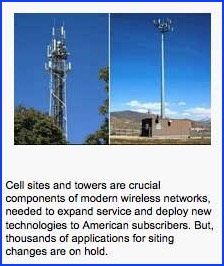 .
.Silicon Flatirons Spectrum Conference Papers Available
Also Paper on FM/ILS Controversy
In U.S. Spectrum Policy: The Way Forward, Kathryn C. Brown and Charla Rath
Beyond Kolkata: Delivering on the Fundamental Goals of the Communications Act, Michele C. Farquhar
Not A Zero Sum Game - Why Objections To The PCAST Report Make No Sense, Harold Feld
The Stunted Public Interest Vocabulary in the Broadcast Spectrum Auction, Ellen P. Goodman
U.S. Spectrum Policy - When the Rubber Meets the Road, Kathleen Ham and Sara Leibman
The Promise and Problems of Strategic Plans, Charles L. Jackson
The Promise and Problems of Strategic Plans: From the Spectrum Policy Task Force to the PCAST Report, Michael J. Marcus
The View Ahead: Technology Opportunities, Preston Marshall
The Wireless Data Demand: Technology and Spectrum Implications, Edward G. Tiedemann, Jr.
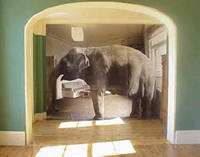
However, there are lessons to be learned from this long simmering dispute: Receiver standards often have economic externalities - those who pay the cost are not the same as those who get the benefits. If we do not recognize this issue and find a way to deal with them there will be no progression this area.
Instrument Landing System Receiver Standards:
A Case Study of Receiver Regulation and Its Difficulties
The Instrument Landing System (ILS), used worldwide by aviation users, has two bands, one of which is just above the FM broadcast band at 108.1 -112 MHz. This safety-related landing system has been standardized by both FAA and ICAO, the ITU’s aviation counterpart. Unfortunately the adjacency to the FM broadcast band results in a possible vulnerability to receiver-generated intermodulation interference. This vulnerability was confirmed in FCC Lab measurements.(1 2) FAA and FCC have had a long standing disagreement on the best public policy approach to prevent such interference and NTIA has generally taken a neutral role with respect to this issue and has not been directly involved.
ICAO adopted immunity standards for ILS receivers that were effective international in 1998. (Those stands are mentioned by NTIA on p. 29 of its receiver standards compilation; The specifics of the ICAO regulation can be found in this document from the South African FAA counterpart.) FAA has implemented the ICAO regulation but still allows use of the previous generation of receivers and uses its powers under the Airways Facilities Act to threaten new or modified FM broadcast facilities for “hazard determinations” if they apply for a location, frequency, or power that would cause interference to the earlier generation receivers as projected by a FAA computer model that was not adopted in a “notice and comment” proceeding.
FCC proposed in 1993 to require only ICAO-complaint receivers in all US aircraft after the 1998 effectiveness date. (the NPRM was in response to this petition from broadcast interests.) This NPRM was opposed by aviation interests that felt they should not be burdened with replacing receivers in order to facilitate the use of broadcast spectrum (1 2 3). FCC took no further action on this NPRM until the docket was closed in a 2002 housekeeping action for being “stale”.
It is generally felt that airliners and corporate jets are not affected by this issue since, for practical purposes, they must be equipped to fly outside the US and therefore have ICAO-complaint receivers. However, there are small general aviation aircraft that are not actually required to be ILS-equipped that may well have the previous generation receivers and their trade association, AOPA, has vociferously objected to a mandated upgrade. (It is thought that all ILS receivers made anywhere in the past 20 years comply with the ICAO standard so that any noncompliant receiver in present use is likely 20+ years old.)
This receiver standard issue is a classic economic externality. The aviation users who would incur the cost of a new receiver would get no direct benefit. The benefits would accrue to broadcasters who could modify their facilities to better serve the public though power or siting changes and to the public that would receive addition FM stations if present FAA objections to some new allotments were dropped.
As in the GPS/LightSquared issue, this also falls squarely on the FCC/NTIA jurisdictional fault line, although complicated by the role of FAA and its partially overlapping jurisdiction.
Developing receiver standards is a technically complex issue. But in this case there is a specific international standard that was developed with participation of all affected parties. The US ambivalence towards receiver standards has left that standard in limbo in the US in the 2 decades since it was developed and has limited the utilization of FM broadcast spectrum in order to avoid putting any increased regulatory burdens on an ever decreasing number of small aircraft with obsolescent receivers that could not be used in most other countries.
It is not clear how this issue can ever be resolved due to the jurisdictional issues unless the Executive Branch takes a more holistic approach to such spectrum issues.
GAO Report on Spectrum Sharing
GAO writes,
While federal spectrum users often share spectrum among themselves, they may have little economic incentive to otherwise use spectrum efficiently, including sharing it with nonfederal users. From an economic perspective, when a consumer pays the market price for a good or service and thus cannot get more of it without this expense, the consumer has an incentive to get the most value and efficiency out of the good as possible. If no price is attached to a good—which is essentially the case with federal agencies’ use of spectrum14—the normal market incentive to use the good efficiently may be muted. (p. 11)
Actually while it is true that “federal spectrum users often share spectrum among themselves”, this is mostly due to pressure from Congress and OMB, not so much from NTIA leadership or the collective interest of federal agencies who generally would just like to have their own systems regardless of financial or spectrum efficiency. But the availability of “free spectrum” has warped the decision making process in federal agencies since the marginal cost of spectrum is always less than the marginal cost of more efficient technology.
Echoing the findings of the controversial PCAST report, GAO writes
We have previously reported that to improve spectrum efficiency among federal agencies, Congress may wish to consider evaluating what mechanisms could be adopted to provide better incentives and opportunities for agencies to move toward more efficient use of spectrum, which could free up some spectrum allocated for federal use to be made available for sharing or other purposes.
The report ends with 3 recommendations for FCC NTIA action:
• Report their agencies’ views and conclusions regarding spectrum usage fees to the relevant congressional committees, specifically with respect to the merits, potential effects, and implementation challenges of such a fee structure, and what authority, if any, Congress would need to grant for such a structure to be implemented.
• Based on the findings of current research and development efforts under way, determine how the federal government can best promote federal and nonfederal investment in the research and development of spectrally efficient technologies, and whether additional spectrum is needed for testing new spectrum efficient technologies.
• Evaluate regulatory changes, if any, that can help improve and expedite the spectrum sharing process.
Will this report have a major impact on spectrum sharing? Probably not. But this report adds to the weight of the PCAST report with respect to the problems of federal spectrum management. These problems arise not from the lack of public interest in the NTIA staff and IRAC membership, rather than the fact that the present 1978 NTIA structure is unrealistic in view of the current demands for spectrum from all public and private parts of our society and economy and the new technical options for sharing that just were not even a pipe dream when the 1978 framework was put in place in the Carter Administration.
ABC's Modern Family & Maxwell
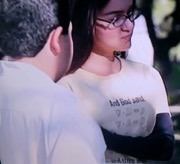
To us techies, the shirt was instant recognizable as showing Maxwell’s Equations in differential form. Here is a picture of the same or a similar shirt from a website.
The MIT website gives what they claim as the history of this design which for many years was sold by MIT Hillel, a Jewish student group, for fund raising.
James Clerk Maxwell grouped together the work of other physicists of his day including Ampère’, Gauss, and Faraday and showed how they were all consistent and could predict the existence of electromagnetic waves such as light and radio. The equations in the form shown are due to the later work of Oliver Heaviside, memorialized in the lyrics for Cats in the refrain “Up, up, up, up to the Heaviside layer” which deals with other work he did on ionospheric radio propagation.
James Clerk Maxwell (l)
Oliver Heaviside(r)
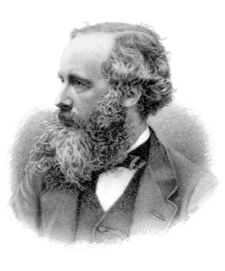
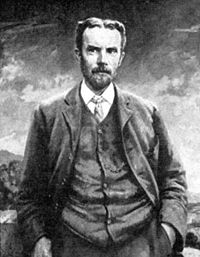
Spectrum Management Boot Camp, December 3rd & 4th, 2012

The two-day Spectrum Management Boot Camp combines seven Radio Spectrum Institute classes into a complete practical introduction to international and U.S. spectrum management. The emphasis is on the key regulatory aspects that impact the use of the radio spectrum to meet industry or government mission requirements. Important technical considerations are simplified and explained.
Spectrum Management Boot Camp is targeted at professionals who must quickly come up to speed on the diverse requirements of modern spectrum management, or current wireless professionals who desire a broader understanding of the radio spectrum management landscape.
Compared to the one-day Boot Camp, the two-day Boot Camp delves into more details in each topic area and provides more time for questions and discussion. We recommend the two-day Boot Camp for those whose schedule allows.
For more details, surf over here.
Broadcasters' Property Rights
It is ironic that a National Broadband Plan insider told me that the first draft of NBP included a similar discussion. But so impressive are the powers of the broadcast interests and so “captured” is the FCC, as are many other regulatory agencies, that within 30 minutes of the release of the first NBP draft to the FCC Media Bureau the Chairman’s Office started getting calls from the Hill objecting to this approach.
Wow! That’s raw political power and regulatory capture! NAB - real impressive. CTIA may still have at the moment the inside track on the 8th Floor, but don’t count out the broadcasters with their decades of experience with playing power games.
(Of course, one might also want to address why there is such regulatory capture and start countermeasures, but I doubt anyone at FCC wants to address that issue. I believe that an active program of job rotation by career civil servants would be a major step to deter such capture. But there has never been interest on the 8th Floor in such an approach since the focus is always on near term gains not long term benefits and rotations would have near term costs.)

US broadcasters have no property rights in spectrum,
says academic research:
The work claims the legal status of broadcasting spectrum is as clear as mud
but incentive auctions are a wayof sidestepping the problem
by Dugie Standeford
© PT Publishing 2012 Tel: +44 (0)20 7100 2875
Reprinted by permission
Legal claims to property rights in spectrum are “highly tenuous” and would likely allow the US government to reclaim the spectrum without compensation
The US Spectrum Act authorising “reverse” and incentive auctions gives broadcasters the option of handing back their 6 MHz licences, relinquishing spectrum and sharing their TV channel with other licencees, or moving from a UHF to a VHF channel. In the reverse auction phase, broadcast TV licensees will be able to bid to voluntarily give up spectrum usage rights in exchange for payments. But one vexing, and still unresolved, question – on which the Federal Communications Commission (FCC) is now seeking comment – is how to determine how much winners of the reverse auction should receive.
Two academic papers by financial analyst Armand Musey, founder of Summit Ridge Group LLC, explore possible property rights broadcasters may have in the spectrum they hold and legal bases on which the government could reallocate the spectrum and assess compensation.
One article, “How the Traditional Property Rights Model Informs the Broadcast Television Spectrum Rationalization Challenge,” appeared in the Spring 2012 Hastings Communication and Entertainment Law Journal. The second, “Broadcasting Licenses: Ownership Rights and the Spectrum Rationalization Challenge,” is in the Spring 2012 issue of the Columbia Science and Technology Law Review. Musey's research focuses on telecom and media regulation with an emphasis on how regulatory policy affects business models and public welfare, and he's particularly interested in wireless spectrum valuation, he said.
The National Association of Broadcasters would not discuss the specifics of the property rights question. But Dennis Wharton, executive vice president, communications, told PolicyTracker that the premise that broadband is somehow a higher and better use of spectrum than broadcasting “is fundamentally flawed.” Musey's research doesn't acknowledge that broadcasting's “one-to-everyone” transmission architecture is far more efficient that the inefficient “one-to-one” architecture of cellphones and the Internet, he said. “The reality is that broadcast and broadband are complementary services, and the government ought not be in the business of favouring one over the other,” he said in an email.
Broadcasters' legal claim
Legal claims to property rights in spectrum are “highly tenuous” and would likely allow the US government to reclaim the spectrum without compensation when broadcast licences expire, Musey wrote in the Hastings article. But the fact that the US has made the reverse auction voluntary, and that it won't force broadcasters to relinquish spectrum, shows that it “is essentially recognizing even greater possession rights for the broadcasters than owners of private property traditionally enjoy,” he said.
There is inherent tension” between the 1934 act, which says spectrum licence holders have no property rights, and the “seeming implicit guarantees of renewal and increased ability to transfer” in later law
But claims that FCC licences confer property rights are weak, the Columbia article argued. Broadcasters' right to control their spectrum are set out in the Communications Act of 1934 and the Telecommunications Act of 1996. Analysed according to their text and relevant legislative history, those measures indicate that broadcasters don't have a claim to property rights that would entitle them to payment for non-renewal of their licences, Musey said. But if one considers how the laws have been applied in some situations, broadcasters may have some “legitimate (and growing)” expectation of property rights, he said.
One area where those rights might be implicated is in the fact that all FCC licence holders expect their licences to be renewed automatically unless they egregiously violate the terms, Musey wrote. Moreover, broadcasters' increased ability to transfer licences suggests they may have some property rights in them. All this is countered, however, by other language in the 1996 act that lets the FCC change a broadcaster's rights upon renewal by, say, reducing the current spectrum allocation of 6 MHz or moving it to a less desirable part of the band. The fact that the regulator has the discretion to make such changes signals that the government still has significant control over the spectrum, he said.
“There is inherent tension” between the text of the 1934 act, which says that spectrum licence holders have no property rights, and the “seeming implicit guarantees of renewal and increased ability to transfer” in the later law, Musey wrote. While 60 years of FCC and congressional policy decisions seem to give broadcasters some expectation of property rights in their licences, however, the fact that Congress has never amended the provision that states explicitly that no such property rights exist makes it likely that any claim for property rights would fail, he said. And even if broadcasters did have some rights in the spectrum and were entitled to compensation for non-renewal, they wouldn't be entitled to payment for any increased value arising from the government's future use and/or need of the spectrum for higher-value, mobile broadband applications, he said.
A need to “fudge”
For practical and political reasons, the most expedient solution to reallocating TV spectrum is for the government to negotiate a price to buy out broadcasters that is more generous than the minimal legal compensation required to give them due process, Musey wrote. But it will be hard for the government to legally justify such a payment without facing claims of waste of government assets; and, conversely, it would be difficult to maximise the value of future FCC auctions to motivate licencees to invest in advanced services on their spectrum if the FCC has a policy of depriving licencees of their expected licence rights, he said. Finding a solution is a challenge, he said.
Maybe that's why the FCC and Congress decided to “fudge” the issue by settling on the idea of a voluntary incentive auction, Musey said. The Spectrum Act requires the regulator to base the incentive auction price on the result of a reverse auction to determine broadcasters' asking price for relinquishing their spectrum. That payment will likely reflect a discount to the market value of the spectrum to its higher-value use but also perhaps be slightly higher than its current use value, he said. The “stick” to encourage broadcasters to participate in the voluntary process is the FCC's argument that it can modify the licences at any time, and the implicit threat to take the spectrum away, he said. While the Spectrum Act prevents the FCC from doing that during the auction process, it could do so after the auction to clear spectrum in problem markets with holdout broadcasters, he said.
'Politically influenced” higher payment best?
Treating spectrum rights as having elements of private property prompts questions about how the government will pay broadcasters for the loss of their rights, Musey wrote. If the FCC can't reach a voluntary settlement with broadcasters, it could try to seize the spectrum under “eminent domain” principles, he said. Under that approach, the government, under the Takings Clause of the US Constitution, would buy licences at the fair market value of the loss it causes a broadcaster's current business.
Eminent domain law prevents payments based on the increase in value of the property for the government's higher-value intended future use, but the political pressures surrounding the incentive auction could push the government to sweeten the offer beyond the current market value of TV broadcast use, Musey wrote. In fact, offering a sum that exceeds market value “may be the most expeditious solution” to shifting broadcasters off the spectrum, he said.
Can the analysis help broadcasters set reverse auction prices?
Asked if his approach could help broadcasters come up with prices for the reverse auction, Musey said, “Yes and no.” Broadcasters can set their fees, but the FCC will decide which bids to accept, he said. If the regulator decides the prices are too high, or not enough broadcasters submit bids in the market where the FCC wants spectrum, “we are back to square one with the government theoretically having the ability to not renew the licenses,” he said.
The FCC's “not so subtle message” to broadcasters is, “We are going to get this spectrum one way or another and if you don't submit sufficient[ly] reasonable bids and we have to pry it away later, it will be on much less attractive terms,” Musey said. There is very much a negotiation over what is reasonable, he said. The FCC must also try not to apply too much pressure and undermine the success of later auctions, or deter other current and future licencees from investing in new services out of concern over the stability of their spectrum licences, he said.•
NAB/CTIA Hurricane Sandy Twitter Feud
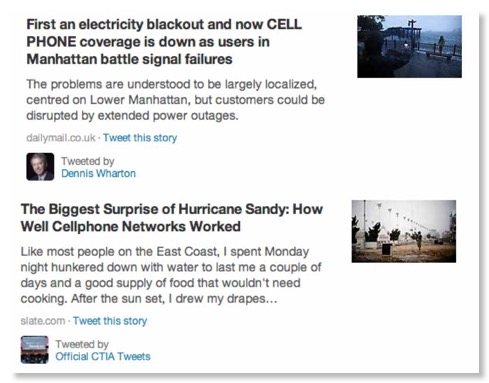
While the East Coast recovers from Hurricane Sandy, the PR forces at both NAB and CTIA are using the occasion for a Twitter war to take advantage of people’s misery, not doubt with an eye on the pending incentive auctions. The above 2 tweets showed up in my Twitter Digest. The top tweet from NAB’s Dennis Wharton, Executive VP, Media Relations, links to this Reuters article entitled “Hurricane Sandy disrupts Northeast U.S. telecom networks” which includes the line “Cellphone service was spotty for top wireless providers Verizon Wireless, AT&T Inc and T-Mobile USA, a unit of Deutsche Telekom, according to some customers.” However the article did not focus on cellphone issues and dealt with wirelines, CATV, and cellular issues.
The “Official CTIA Tweet” links to this Slate article entitled “The Biggest Surprise of Hurricane Sandy: How Well Cellphone Networks Worked”. This article contrast dramatically with the article on the front page of today’s WSJ “After Sandy, Wired New Yorkers Get Reconnected With Pay Phones:Coin-Eating Retro Devices Baffle Some, Frustrate Many; Moment Merits a Tweet”
Like the terrorist attacks of 2001 and the blackout of 2003, Sandy has exposed the limitations of the cellphone. Not only does it require electricity for charging, but the cellphone also won't pick up service if a major storm has knocked out the telecommunications infrastructure that provides reception.
Apparently no one really knows quantitatively how well the cell phone networks are doing post-Sandy. Cnet.com reports:
Genachowski said that as of 10 a.m. ET today, 25 percent of the nation's wireless companies' cell sites were not operational in 158 counties in 10 states from Virginia to Massachusetts. This information comes from the carriers themselves, which report outages to the FCC as part of the agency's Disaster Information Reporting System (DIRS).Genachowski and David Turetsky, who is the FCC's public safety and home security bureau chief, explained that the number of cell sites and cable customers without service was greater in areas where there has been more storm damage. And they emphasized that the storm is still ongoing as it travels westward to states such as Michigan. And they are expecting more disruptions as the storm progresses.
The officials wouldn't comment specifically on how many wireless customers have been affected by the outages. But they said service is likely to get worse for customers before it gets better. Even customers who may have service now in some affected areas could be without it in the coming days as backup batteries run out of power.
The main issue affecting the restoration of service to cell sites is the fact that commercial power may be out for several days or even weeks in some areas. Between 7 million to 8 million people are reportedly without power in areas affected by the hurricane, officials said.
Some cell sites have already been running on backup power. But the FCC was unable to say exactly how many. Still, the commercial power issues mean that these sites could also go down in the next day or so, especially if repair crews are unable to get to sites that need battery replacements and generators that need refueling.
HuffPo has a similar report.
CTIA’s Chris Guttman-McCabe, Vice President, Regulatory Affairs, was on NPR this morning defending CTIA’s court appeal to block the post-Katrina FCC emergency power rule. Harold Feld, who was also on NPR this morning, describes this issue in a post entitled “If your cell tower loses power, be sure to thank CTIA and the D.C. Circuit”
CTIA and NAB: This is not the time to be name calling or be defensive of past actions. Please stop your Twitter war. Let’s focus on restoring service and on how to make communications policy more responsive to national needs, not just the near term problems of your industry.
UPDATE
The November 2 WSJ has an article entitled “Outages Expose Wireless Carriers' Backup Plans”.
Some interesting quotes:
Regulators and phone companies have sparred since Hurricane Katrina over how best to ensure the resiliency of wireless networks. The industry has largely won, for example, fighting back regulations that would have required backup power at cell towers. …
Wireless carriers have released little data this week to allow broader conclusions to be drawn of how the networks are holding up in various locations. While electric utilities publish regular updates on the number and location of customers without power, carriers have made only vague statements about the state of their networks. …
Carriers say they've worked in recent years to make their networks more reliable, installing more secure infrastructure and redundant communications paths. But in Washington, they have fought efforts to make them more accountable in disasters. After widespread cellphone outages in the aftermath of Hurricane Katrina, the FCC tried to require wireless carriers to install backup batteries at all of their sites. Carriers sued to block the rule, and the government eventually dropped its attempt to implement it. …
Last year, the FCC proposed that the industry explore wireless networks that can be operated from blimps and unmanned aircraft in a disaster. The wireless industry pushed back, arguing such systems would cause interference. Wireless carriers argue they don't need rules to ensure the reliability of their networks, because it's in their best interest to do so. …"We're pulling up the safety net behind us, and we don't have a new safety net in case something goes wrong," said Harold Feld, legal director for consumer group Public Knowledge.
It isn’t often when the WSJ is sympathetic with the Genachowski FCC and quotes Harold Feld and not the CTIA staff.
Let me also recommend the evolving discussion of the above article on the WSJ site which contains a variety of view points on this issue, some supportive of the industry, some not.
CTIA leadership, you can impress your membership by winning this type of court cases, but is it really worth it? Is it really in the interest of your members or the public?
UPDATE 2
On November 2, the NY Times, which rarely agrees with WSJ on anything, published an article on cellphone outages entitled “Steaming at Hit-or-Miss Service” -- also quoting Harold Feld.
In an emergency, a lack of cellphone reception can be dangerous, especially as more people have chosen to snip landlines out of their budgets. About 60 percent of American households have landlines, down from 78 percent four years ago, according to Chetan Sharma, an independent mobile analyst. …
“With the new networks we’ve prized keeping costs down, we’ve prized flexibility and we’ve prized innovation,” said Mr. Feld, who wrote a blog post on Monday anticipating cell tower problems. “But we have not put stability as a value when we have been pushing to have these networks built out.”
Mr. Feld noted that after Hurricane Katrina in 2005, the F.C.C. recommended that carriers install backup batteries on their transmission towers that would last 24 hours, among other measures. But the carriers objected, presumably because they did not want to spend the money, he said. (Of course, 24 hours would not have been enough in many areas hit by the latest storm.)
In general, the carriers say it is in their own interest to fortify their networks for emergency situations, but Mr. Feld said this incentive was not enough.
The unreliability of wireless networks may point to a bigger problem. Over the years, the phone companies have fought off regulators who want to treat them as utilities, arguing that if they are going to stay innovative, they cannot be burdened with the old rules that phone companies dealt with in the landline era. But as a consequence, there are almost no rules about what carriers have to do in an emergency, said Harold Feld, senior vice president for Public Knowledge, a nonprofit that focuses on information policy.
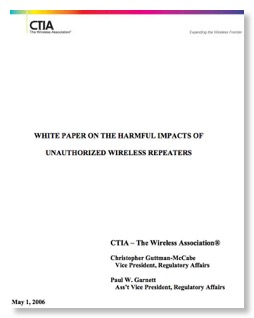
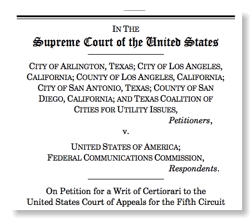
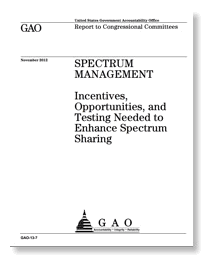




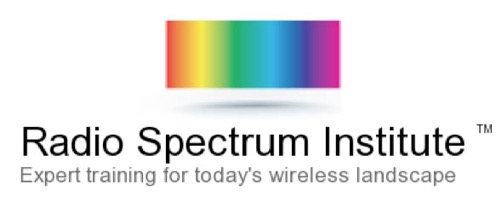


![Validate my RSS feed [Valid RSS]](valid-rss-rogers.png)

